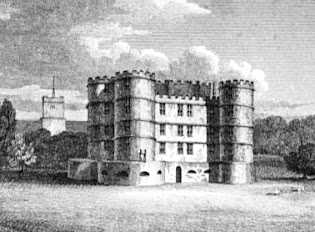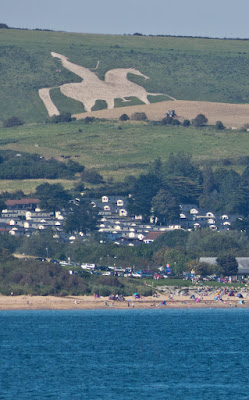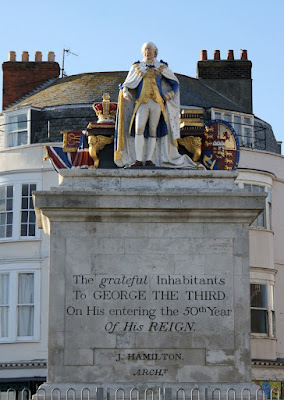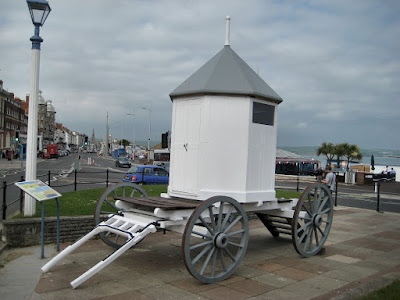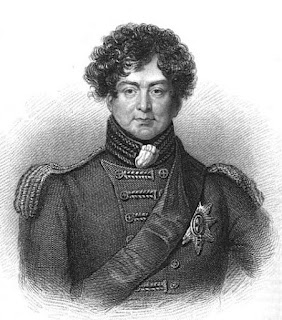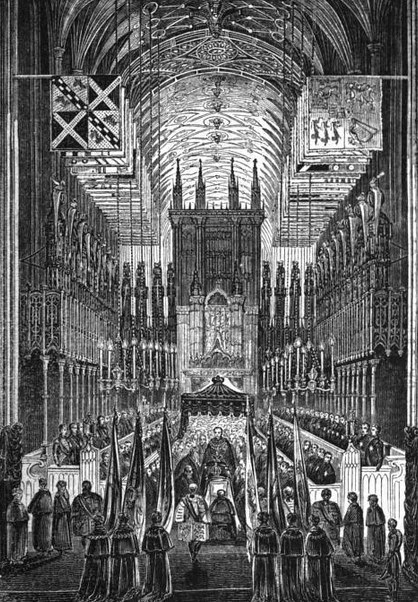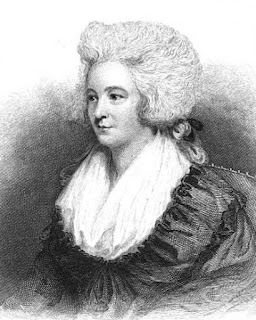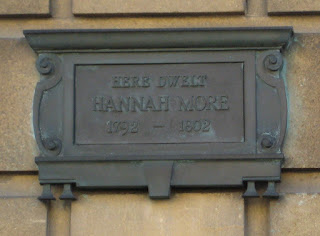 |
William Pitt
from Memoirs of George IV by R Huish (1830) |
Profile
William Pitt (28 May 1759 - 23 January 1806) was a Tory MP who served as First Lord of the Treasury, effectively prime minister, from 19 December 1783 to 14 March 1801 and again from 10 May 1804 until his death in 1806. He first took on this role aged 24 years and 205 days
(1) making him the youngest prime minister to date.
Family and early years
William Pitt was born in Kent on 28 May 1759, the second son of William Pitt, Earl of Chatham, and Lady Hester Granville. He was designated 'Pitt the Younger' to distinguish him from his father who had also served as First Lord of the Treasury.
From an early age, he demonstrated a very keen, able mind and a determination to follow in his father’s footsteps in parliament. He suffered from frequent bouts of ill health, for which he was prescribed port wine, and so was educated at home by the Reverend Edward Wilson. He went up to Pembroke College, Cambridge, in April 1773, at the early age of 14.
Cambridge University
 |
Pembroke College, Cambridge
from Memorials of Cambridge by CH Cooper (1829) |
At Cambridge, he pursued his love of the classics and mathematics and developed his debating skills. He socialised little outside the university grounds, where he had a small group of friends including his tutor, George Pretyman, and
William Wilberforce.
Because of his ill health, he used his right as the son of a nobleman to graduate without taking exams. He continued to reside at the college until financial necessity forced him to take up a profession after the death of his father.
In 1780, Pitt was called to the bar and joined the western circuit as a barrister. He witnessed the Gordon Riots from his rooms in Lincolns Inn.
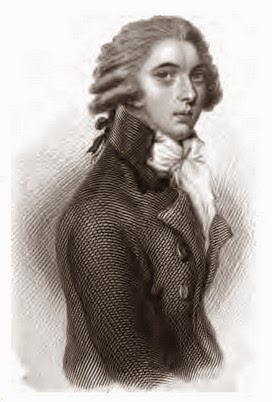 |
William Pitt the Younger
from Posthumous Memoirs of his own time
by N Wraxall (1836) |
Pitt enters politics
In the general election of 1780, Pitt stood as a candidate for Cambridge University but was returned at the bottom of the poll. However, in a by-election the following January, he was elected to the borough of Appleby through the influence of the Duke of Rutland.
On 26 February 1781, Pitt gave his maiden speech in the House of Commons. According to Debrett, his voice was “rich and striking, full of melody and force; his manner easy and elegant; his language beautiful and luxuriant. He gave in this first essay, a specimen of eloquence, not unworthy the son of his immortal parent”
(2).
Chancellor of the Exchequer
Pitt became Chancellor of the Exchequer under Shelburne but declined to take over the government when Shelburne’s ministry failed.
The King was forced to ask the Duke of Portland to form a government, backed by a coalition of Fox and North.
Pitt became a member of the opposition, but when the King vehemently opposed the proposed reforms of the East India Company and declared that any who voted in favour would be counted his enemies, his moment had come. The government collapsed and the King offered the leadership to Pitt who was now ready to accept it. In the general election that soon followed, Pitt was elected member for the University of Cambridge and obtained a significant majority.
Pitt’s first ministry (1783-1801)
During Pitt's ministry he took steps to reduce the national debt, reformed the administration of the East India Company and the collection of excise duties, introduced the first income tax and supported the abolition of slavery. Pitt’s leadership was threatened by the
Regency crisis of 1788 when it looked like the
Prince of Wales would be made Regent and his friend Fox would come into power, but the King recovered.
 |
Charles James Fox
from Memoirs of George IV by R Huish (1830) |
After the French Revolution, there was the threat of rebellion in Ireland and renewed war with France. Pitt saw the Act of Union as the solution to the Irish problem, but when he proposed to allow Irish Catholics into Parliament, the King was outraged and on 3 February 1801, Pitt resigned, returning the seals of office on 14 March, and Henry Addington took over.
Pitt’s second ministry (1804-1806)
When Addington resigned in April 1804, Pitt was again asked to form a government. Pitt wanted to include Fox and Grenville in his cabinet, but the King refused to accept Fox, and Grenville refused to serve without him, and so Pitt was forced to manage without either of these talented men. Pitt struggled continually to hold the government together under the strains of war and the impeachment of the corrupt Lord Melville.
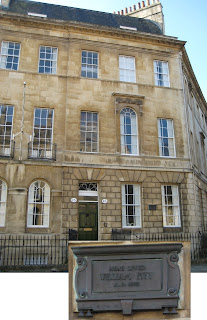 |
| Pitt's house in Bath in 1802 |
The private life of Pitt
Pitt was a man with few vices. Lord Macaulay wrote: “The correctness of his private life added much to the dignity of his public character.”
(3) He drank port heavily, but was rarely drunk. He had a strong inclination towards gambling, but had the prudence and resolution of character to prevent his taste for play from becoming a habit. Though unmarried, he did not keep a mistress. His niece Hester Lucy Stanhope lived with him for the last three years of his life.
Married to his career
Only once did Pitt consider marriage – to Eleanor Eden, eldest daughter of Lord Auckland – but whilst expressing great affection for her in a letter to her father, he stated that circumstances made marriage impossible. There was some speculation that he was homosexual, but his lack of involvement with women may simply have resulted from shyness coupled with ill health and a busy life committed to politics.
An affectionate friend
Pitt had few friends but in the small circle of his intimate associations, he was amicable, affectionate, even playful. He frequently stayed at Wilberforce's house in Wimbledon and accompanied him to the continent in the summer of 1783.
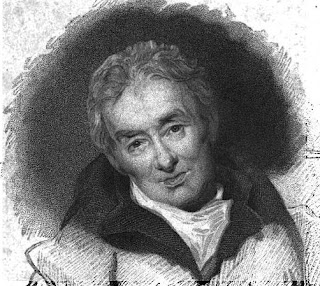 |
William Wilberforce
from The Life of William Wilberforce
by Robert and Samuel Wilberforce (1839) |
He did not patronise the arts and rarely went into society, especially after the outbreak of war in 1793. He spent time at his home in Holwood, Kent, where he enjoyed improving the grounds and farming sheep and also at Walmer Castle, which he had held as warden of the Cinque Ports since 1792.
 |
Walmer Castle, Kent
from England's Topographer or a new and complete history
of the county of Kent by WH Ireland (1829) |
Pitt in debt
Although neither a gambler nor a family man, Pitt was extravagant and somewhat careless with the generous income that he received whilst in power. By the time he died, he had amassed debts of £40,000, which the House of Commons obligingly voted money to satisfy.
Illness and death
The strain of government took its toll on Pitt’s health. He visited Bath in December 1805 but was no better when he returned to his villa in Putney in January. Pitt died on 23 January 1806. He was given a
state funeral on 22 February and buried in Westminster Abbey near his father.
Notes
(1) From the Gov.uk website (see link below).
(2) From
The Parliamentary Register or History of the Proceedings and Debates of the House of Commons - 26 February 1781 - edited by Debrett.
(3) From Lord Macaulay's
The Life of William Pitt (1859)
Sources used include:
Debrett (ed),
The Parliamentary Register or History of the Proceedings and Debates of the House of Commons during the first session of the Fifteenth Parliament of Great Britain (1781)
Ehman, JPW and Smith, Anthony,
Pitt, William (1759-1806) Oxford Dictionary of National Biography (Oxford University Press, 2004; online edn May 2009, accessed 20 July 2012)
Huish, Robert,
Memoirs of George IV (Thomas Kelly, 1830, 1831, London)
Ireland, William Henry,
England's Topographer or a new and complete history of the county of Kent (G Virtue, 1829, London)
Macaulay, Lord,
The Life of William Pitt (The Riverside Press, 1859, Cambridge)
Pollock, John,
Wilberforce (Constable, 1977; Kingsway, 2007, Eastbourne)
Wraxall, Sir Nathaniel William,
Posthumous Memoirs of his own time (1836)
History of Parliament online:
William Pitt
Gov.uk website:
past prime ministers
All photographs ©
Andrew Knowles -
www.flickr.com/photos/dragontomato


